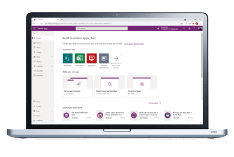Summary
Microsoft Project is a very robust product for creating and managing project schedules. So much so that project managers often find creating work breakdown structured and task lists in the product can be somewhat complex. With Microsoft Project there are many ways to accomplish the same tasks. What matters most is that you find the way that works best for you. In this Microsoft Project Training video, we walk through the steps to create a work breakdown structure that is duration-based. Duration-based schedules are typically easier to track once created because the task durations and other data points do not vary considerably as you enter tracking information after you have started executing your project schedule. Using other Task Types such as Fixed Units or Fixed Work add a bit more complexity to scheduling that is sometimes a bit overkill for new schedulers. It is therefore a good idea to get used to duration-based scheduling, then move on to more advanced Microsoft Project scheduling techniques once acclimated.
This Video
In this video we'll walk through the process of creating a schedule from creating a blank project, defining the initial project attributes such as Start Date and other necessary items. We will then enter Tasks and create Task Relationships. Subsequent to this we will start assignment planning by creating resources, enter Task Estimates, and finally assigning resources. Once we have looked over our schedule and given it a final "reality check", we will baseline it and ready it for execution.
Create a Project Schedule
| Step 1. Create new Project | ||
|---|---|---|
| Create a project from a template | Using a template that is pre-populated with tasks helps with standardization as well as estimation. Many templates available on office.com have been created by industry experts to help project managers get started quickly. | |
| Create a project from scratch (blank) | Start brand new with a new blank project. Populate the project with tasks, resources, Start Date, Finish Date, Duration, and other information. | |
| Create a project from an existing project | Open a project already setup, perhaps even completed that is similar to what you need. Base your current project on this one. Almost like using a template. | |
| Create a project from a previous version of MS Project | Open a project you made in a previous version of project that is similar to what you need. Based your project on this one. | |
| Step 2. Add tasks | Add tasks to your project schedule to capture all the work to be completed. | |
| Add tasks | ||
| Set the length of task duration | Set the amount of time a task should take to complete. You can enter a number, or, a placeholder like "TBD" | |
| Specify the amount of Work that people will perform on tasks | Set the amount of Work hours required for tasks to be completed. This is the total amount of time regardless of number of resources. | |
| Add Milestones | Mark the completion of major deliverables or major events with milestones. | |
| Instead of deleting tasks inactivate them. | If you need to cancel a task consider inactivating it in order to keep a record of it. | |
| Step 3. Organize Tasks | ||
| Link tasks in a project | Link every task in the project (but summary tasks) to show their relationship to each other (task dependency). Linked tasks show the true timeline of the project, as well as reflect reality when one task is delayed. | |
| Outline tasks into Summary and subtasks. | Build a task hierarchy by creating an outline with the Indent and Outdent buttons. | |
| Top-down planning | Set up the major phases of your project, then break them down into individual tasks. | |
| Step 4. Setup up project calendars | ||
| Set working days for the resources on your project. | Set the standard working days for the resources on your project | |
| Add holidays and vacations days | Change resources work schedules by adding holidays and vacations. | |
| Step 5. Save and publish the schedule | ||
| Save a project | Save a local copy of your project as an MPP file. This is done as a backup, or if you are using MS Project standalone. | |
| Save and publish a project to Project Web App | Make the work of your project available for other project stakeholders to view on Project Web App |
Related
- Project for the Web Consulting
- Microsoft Project Training
- Microsoft Project Scheduling
- Microsoft Project Online Consulting
- Microsoft PPM Consulting
- Microsoft PPM Training
- Microsoft Project Online Migration
- Microsoft Project Online Training
- Microsoft Project Online Help
- Microsoft Project Online Support















